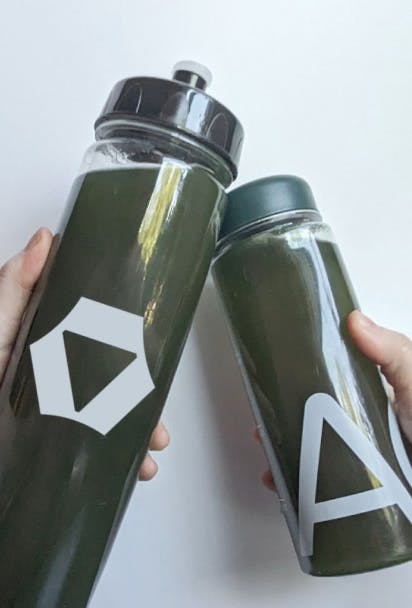Why Subscription-Based Fulfillment Matters
Subscription commerce has exploded across categories like beauty, supplements, apparel, and beverages. Whether it’s a monthly curated box or a replenishment program for everyday essentials, this fulfillment model has offered brands predictable revenue streams and a powerful way to build customer loyalty.
But these benefits are heavily dependent on flawless fulfillment capabilities. Unlike one-off direct-to-consumer (DTC) orders, subscription fulfillment requires handling complex kitting, managing seasonal variations, and meeting recurring timelines with precision.
For brands looking to scale, this raises two critical questions: Which subscription fulfillment model best fits my business? How can I ensure my operations are ready to support subscriptions at scale?
The Complexity Behind Subscription Fulfillment
At first glance, subscription fulfillment may look like standard e-commerce logistics. But the reality is far more complex:
Predictable but Rigid Cadence
Subscriptions are time-bound. Boxes must ship weekly, monthly, or quarterly without fail, and even small delays can erode customer trust.
Complex Kitting and Bundling
Unlike single-SKU orders, subscription boxes often include curated assortments. This means custom assembly, variable inventory pulls, and frequent packaging updates, all of which add operational complexity.
Inventory Planning Challenges
While overall demand is recurring and predictable, customer churn, upgrades, and add-ons can introduce volatility. Even a modest 5% forecasting error can translate into hundreds of missed shipments or overstocked items, leading to hundreds of unhappy subscribers.
High Customer Expectations
Unboxing is the “moment of truth.” Customers expect consistency, presentation, and occasional delight whether that’s in the form of samples, surprise gifts, or exclusive packaging. Subscription fulfillment, therefore, isn’t simply about efficiency; it’s about delivering a brand experience at scale.
Subscription Box Fulfillment Options
Choosing a subscription fulfillment model demands strategic choices rather than a single standard solution. DTC brands often face three main pathways, each with its own set of trade-offs in cost, control, and scalability:
1. In-House Fulfillment
Many early-stage subscription brands start with packing boxes from a garage, small warehouse, or leased space. In-house works for brands shipping a few hundred to a few thousand boxes monthly.
Pros:
Total control over branding and quality.
Ability to experiment with kitting and packaging.
No reliance on external partners.
Cons:
Labor-intensive, with limited scalability.
High fixed overhead for space, staff, and equipment.
Risk of bottlenecks during peak cycles (e.g., holidays or product drops).
2. Outsourced Fulfillment with a 3PL
A specialized third-party logistics (3PL) provider can handle the entire subscription process, from receiving inventory, kitting, and bundling to packing and shipping. For brands scaling to thousands or tens of thousands of subscribers, outsourcing is often the most sustainable option.
Pros:
Scales seamlessly with order growth.
Reduces fixed costs by converting them into variable costs.
Advanced systems provide visibility into inventory, orders, and customer data.
Expertise in kitting and bundling 3PL services ensures efficient assembly and quality control.
Cons:
Less direct oversight day-to-day.
Requires careful partner selection to align on brand standards.
3. Hybrid Fulfillment
Some brands keep part of their subscription process in-house while outsourcing other functions. For example, they might manage kitting internally but rely on a 3PL for final shipping. Hybrid fulfillment is a good option if you are still experimenting with outsourcing and are not yet ready to fully hand over operations to an external provider.
Pros:
Maintains some brand control.
Reduces shipping costs by leveraging 3PL carrier networks.
Flexible transition stage before full outsourcing.
Cons:
Split responsibilities can lead to handoff delays.
Requires strong coordination and data integration.
Kitting and Bundling 3PL Services
One of the most unique elements of subscription fulfillment is kitting and bundling. It’s the process of assembling multiple SKUs into a single package.
Why Kitting Matters
Efficiency: Reduces pick-and-pack errors and speeds up fulfillment.
Consistency: Ensures every box meets brand standards.
Customization: Supports different subscriber tiers, regional variations, or special promotions.
How 3PLs Support Kitting and Bundling
Automated workflows: Pre-kitted boxes reduce last-minute errors.
Flexible assembly lines: Adapt to frequent changes in product assortments.
Integrated WMS/OMS systems: Ensure inventory is allocated correctly across kitted SKUs.
Quality checks: Dedicated processes to prevent missing or incorrect items.
For subscription brands, 3PLs with robust kitting capabilities are essential partners not just for operational efficiency but also for customer satisfaction.
Is Your Brand Ready for Subscription-Based Fulfillment?
This is a question every DTC leader eventually faces. Evaluating readiness involves looking at three critical signals:
1. Volume Thresholds
The size of your subscription program often dictates the most efficient fulfillment approach. For brands shipping under 1,000 boxes per month, in-house fulfillment may be sufficient. Once volumes reach 1,000 to 5,000 boxes monthly, a hybrid model or early engagement with a 3PL can help manage complexity. For subscription programs exceeding 5,000 boxes per month, dedicated subscription-based fulfillment through an external provider is typically the most scalable and cost-effective solution.
2. Operational Pain Points
Consider whether recurring kitting cycles are overwhelming your staff, if shipping delays are causing subscriber churn, or if returns and replacements are getting complex and too time-consuming. If any of these challenges are present, it may indicate that outsourcing fulfillment is the right move to maintain service quality and reduce operational stress.
3. Strategic Priorities
Subscription fulfillment at scale isn’t just about logistics; it’s about freeing bandwidth to focus on your brand’s growth. Ask whether your team would be better spending time on marketing, product development, and customer retention rather than managing warehouse staff. If fulfillment is distracting from high-impact initiatives, scaling through a specialized partner can help align operations with broader strategic goals.
Action Steps: How to Scale with Subscription Fulfillment
1. Audit Your Current Fulfillment Pain Points
Identify where errors, delays, or costs are most visible. Consider your in-house overhead (e.g., rent, labor, packaging, and shipping) and compare it to projected 3PL costs. Remember, 3PLs can often reduce per-order shipping expenses through multi-node fulfillment.
2. Analyze Subscriber Growth
Examine your growth trends: are volumes predictable, or are they accelerating quickly? Assess whether your current setup can handle doubling or tripling subscribers, and ensure you have contingency plans for spikes in demand.
3. Evaluate Partner Capabilities
Consider how important hands-on control is for packaging, kitting, and the overall brand experience. Determine whether clear SOPs and thorough partner training can replicate the level of control you require. Review potential partners for their expertise in bundling, kitting, branded packaging, personalization, and technology integrations to ensure a seamless, customer-focused fulfillment process.
4. Assess Technology Readiness
Ensure your systems provide real-time inventory visibility and automated order management, as small forecasting errors in subscription programs can quickly disrupt entire boxes, not just individual orders. Confirm that your tech stack integrates seamlessly with a 3PL platform to prevent operational disruptions and maintain consistent fulfillment as your subscriber base scales.
5. Design an Efficient Returns Process
Anticipate the unique return challenges of subscription boxes, such as partial returns or damaged items. Establish clear return policies and implement efficient reverse logistics processes to minimize disruption, protect margins, and maintain a positive customer experience.
6. Pilot Before Full Migration
Test your approach with a single subscription tier to validate processes, identify gaps, and fine-tune workflows before expanding to your full subscriber base. Waiting too long to outsource can harm the customer experience, as brands that cling to in-house fulfillment often face missed deadlines or declining quality by the time they make the switch.
7. Future-proof Your Subscription Fulfillment Operations
Subscription commerce will only grow more competitive. After achieving stable subscription fulfillment operations, your brand must continue to innovate. Integrate personalization at scale using 3PL technology to assemble tailored boxes efficiently. Explore sustainable packaging alternatives that balance a memorable unboxing experience with eco-conscious solutions. And utilize data-driven forecasting by integrating marketing, sales, and fulfillment systems for tighter inventory planning.
Case Scenarios: Subscription-Based Fulfillment in Action
Beauty Brand Scaling Rapidly
A skincare brand started with in-house fulfillment but hit 7,000 monthly boxes within a year. Overtime costs surged, and errors increased. Partnering with a 3PL offering kitting and bundling services allowed them to maintain presentation quality while scaling to 15,000 subscribers.
Beverage Brand with Seasonal Peaks
A functional beverage company offered quarterly subscription packs. Demand spiked each summer, overwhelming their warehouse. Moving to a hybrid model by keeping product storage in-house but outsourcing seasonal assembly smoothed out operations without overcommitting to year-round overhead.
Apparel Brand with Tiered Subscriptions
An apparel startup offered multiple subscription tiers: basics, premium, and seasonal drops. Managing the complexity of different assortments became impossible in-house. Outsourcing to a 3PL specializing in kitting streamlined fulfillment and reduced errors.
Final Thoughts
Choosing the right subscription box fulfillment option is one of the most critical decisions for scaling DTC brands. Understanding whether your brand is ready for subscription fulfillment requires analyzing your volumes, pain points, and growth goals. For many, outsourcing to a reliable fulfillment provider with strong kitting and bundling services becomes the key to scaling sustainably while protecting the customer experience.
Want to learn how Stord can streamline and scale your brand’s subscription box fulfillment model? Talk to one of our experts today.








